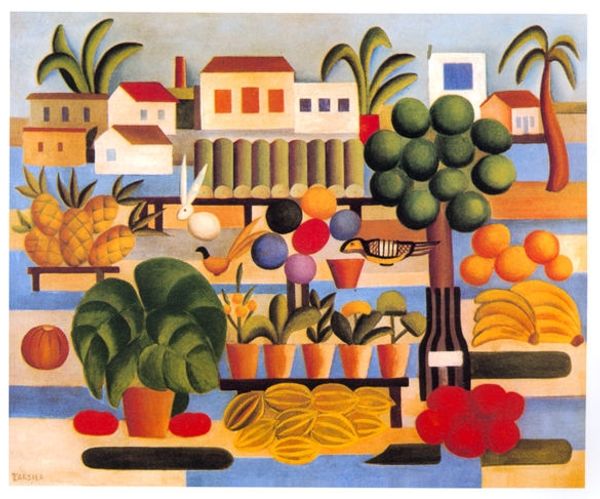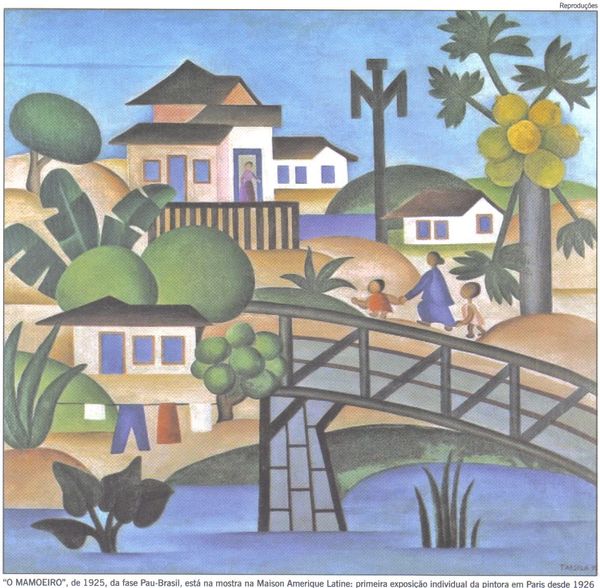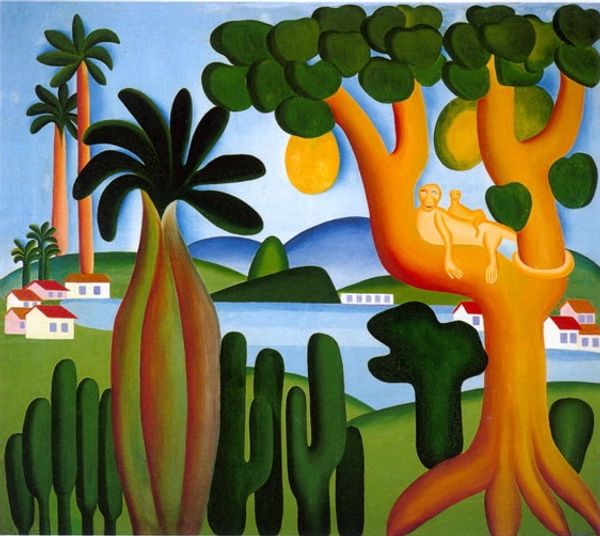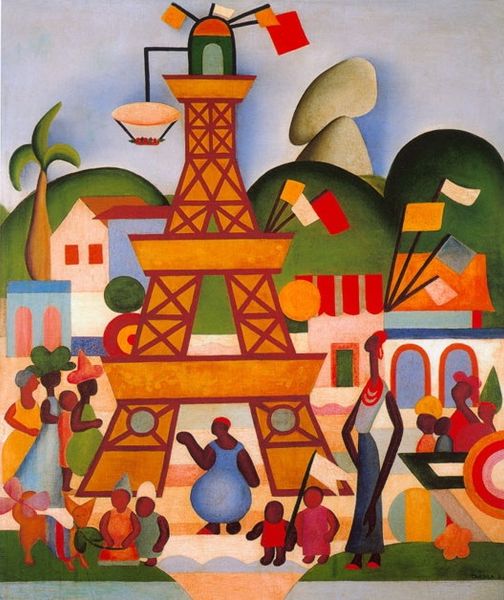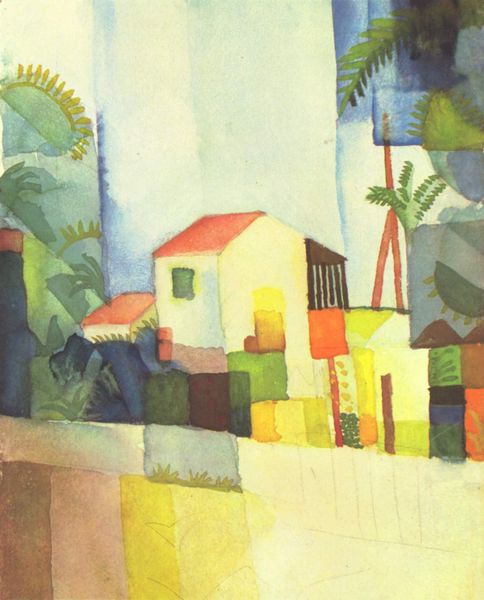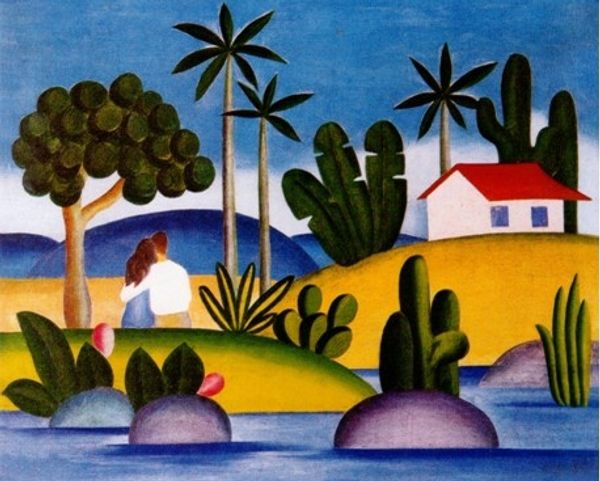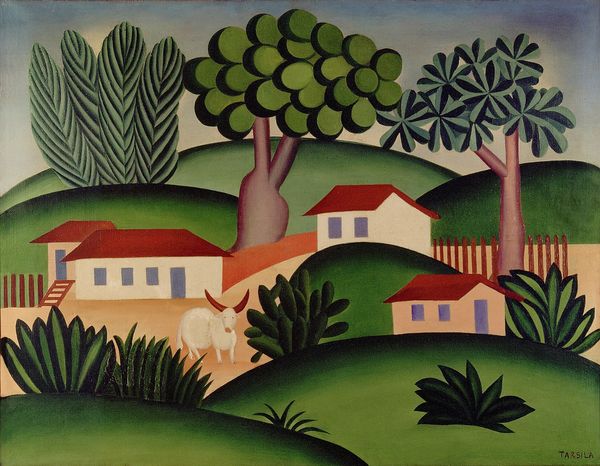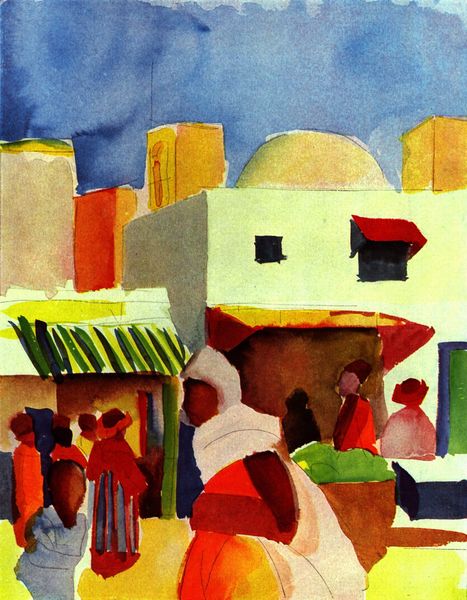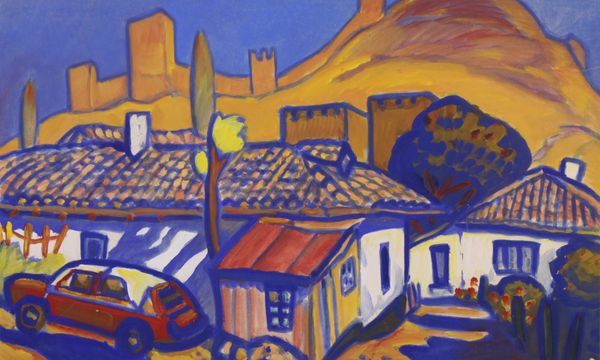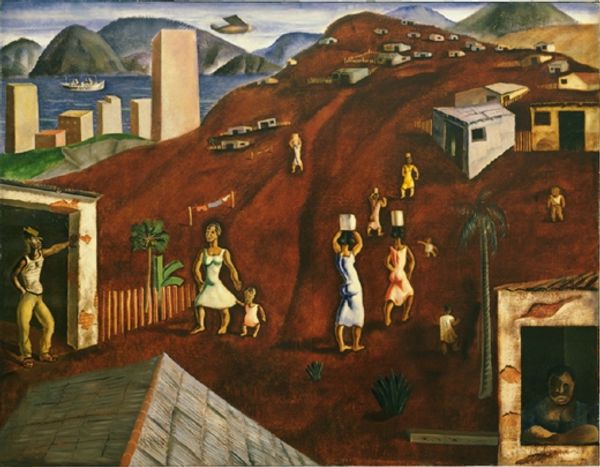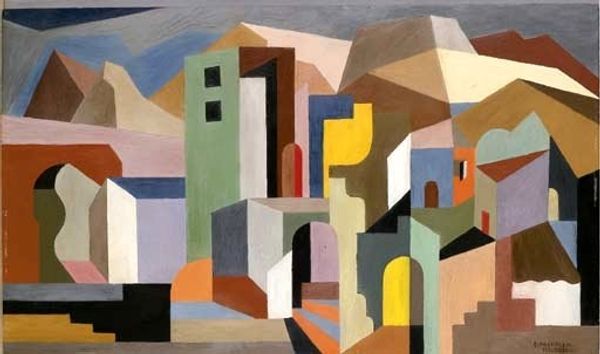
painting, oil-paint
#
cubism
#
painting
#
oil-paint
#
landscape
#
figuration
#
handmade artwork painting
#
cityscape
#
modernism
Dimensions: 64 x 74 cm
Copyright: Tarsila do Amaral,Fair Use
Tarsila do Amaral’s ‘Morro da Favela’ is an oil on canvas that offers a window into Brazilian society, albeit one framed by the artist’s privileged perspective. Painted in the early 20th century, the artwork presents a favela, or shantytown, with its colorful houses and bustling community. Amaral, who came from a wealthy background, creates meaning through her distinctive style, which blends modernism with Brazilian vernacular. The flattened perspective and simplified forms recall European avant-garde movements, yet the subject matter firmly locates the painting within Brazil's social landscape. The favelas emerged as a result of urbanization and socio-economic disparities, becoming symbols of inequality and marginalization. Amaral’s portrayal is not without its complexities; while it celebrates the vibrancy of favela life, it also risks romanticizing poverty. As historians, we turn to sources like contemporary news reports, government documents, and the writings of social critics to unpack such nuances, gaining a more complete view of the artwork's place within Brazil’s social and institutional history.
Comments
No comments
Be the first to comment and join the conversation on the ultimate creative platform.
